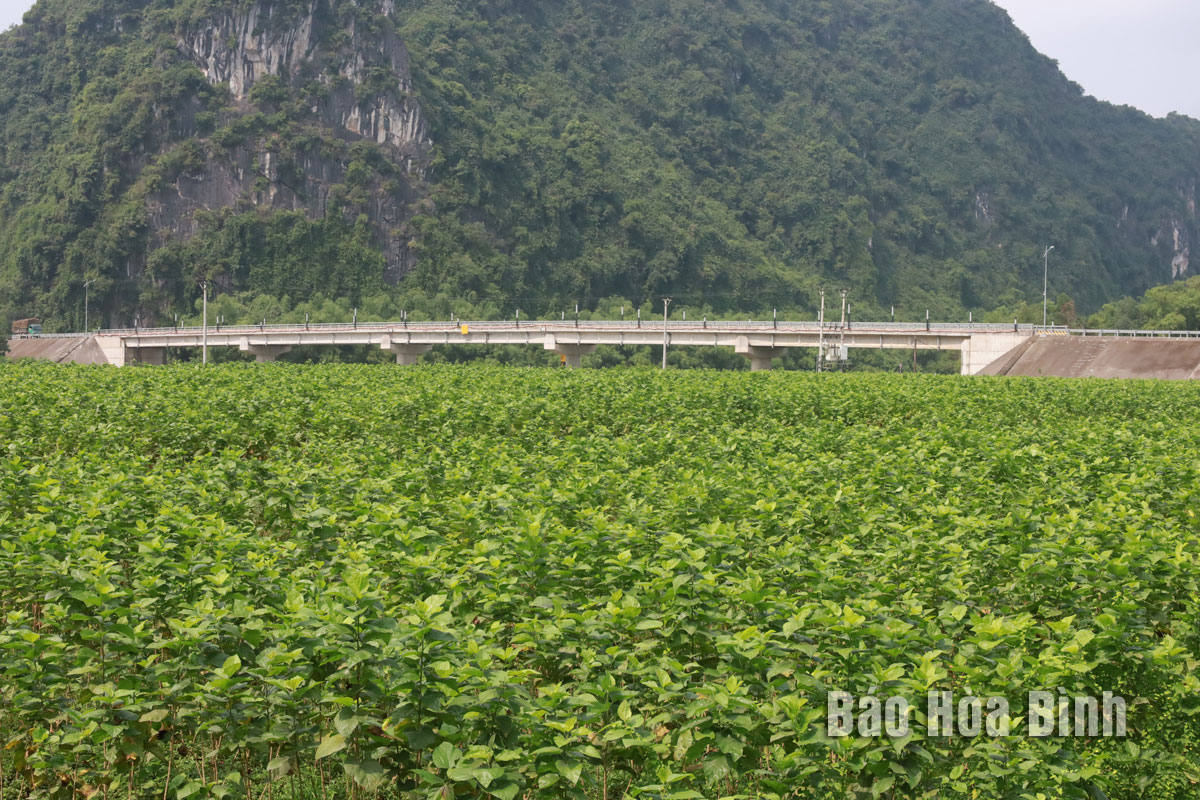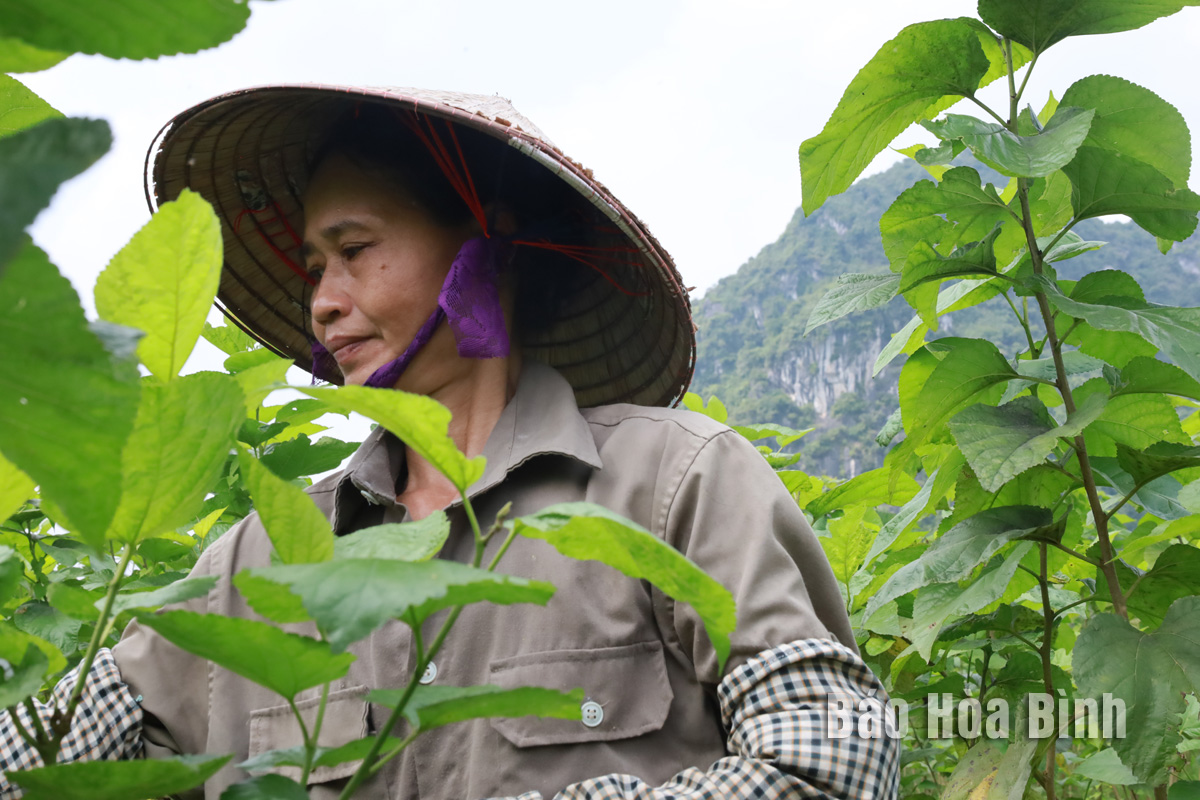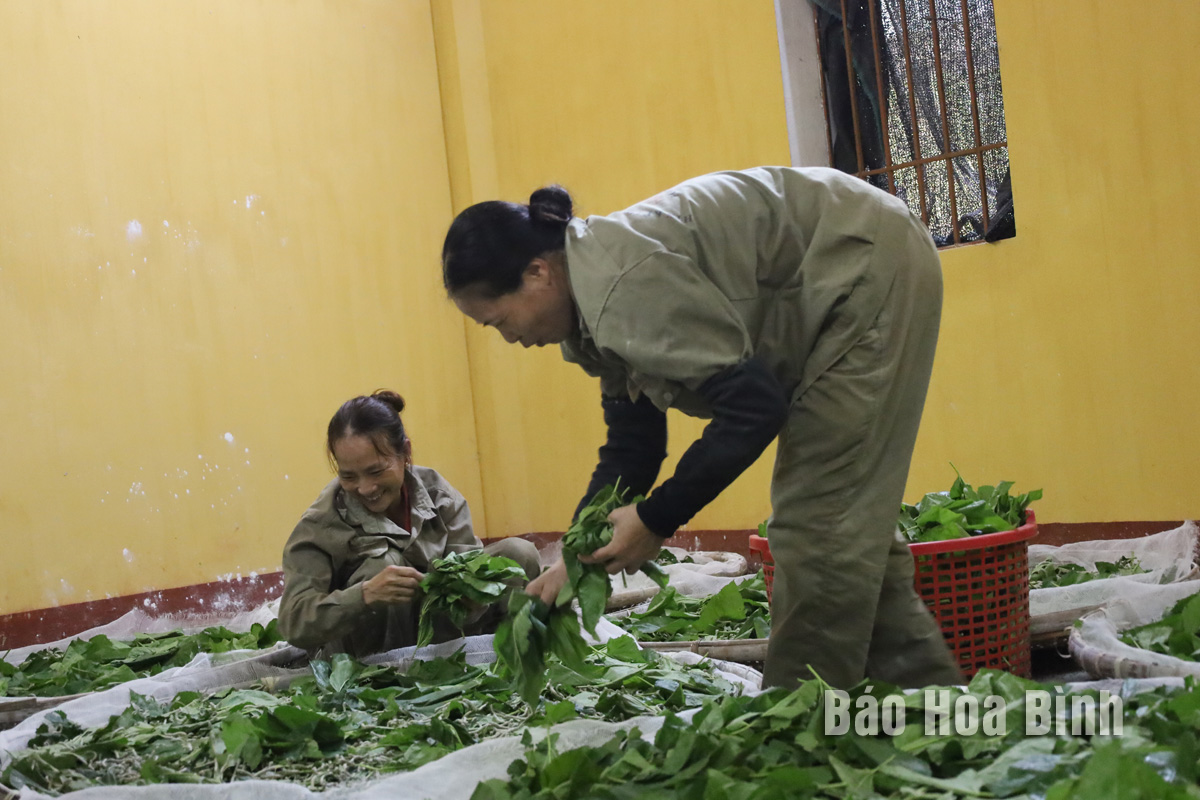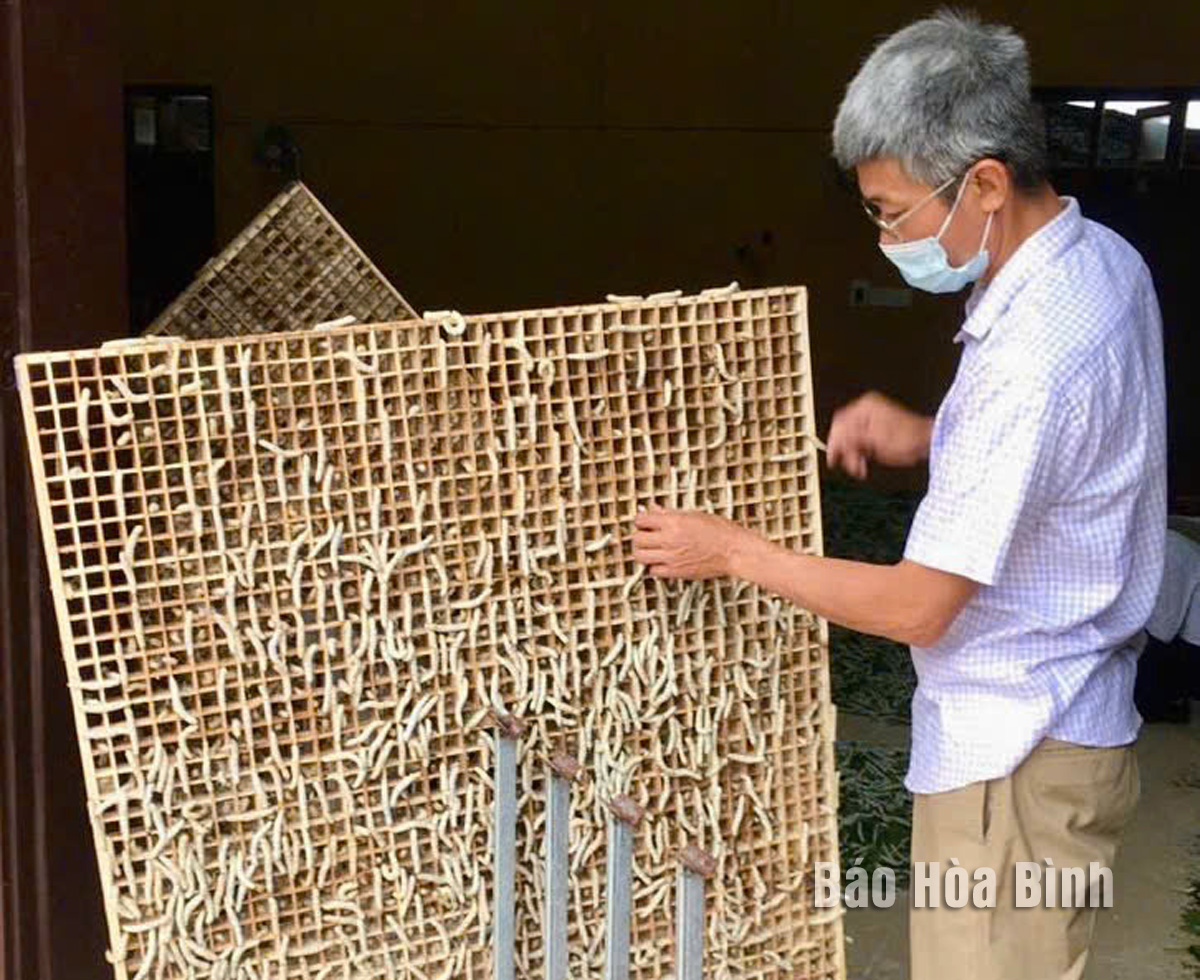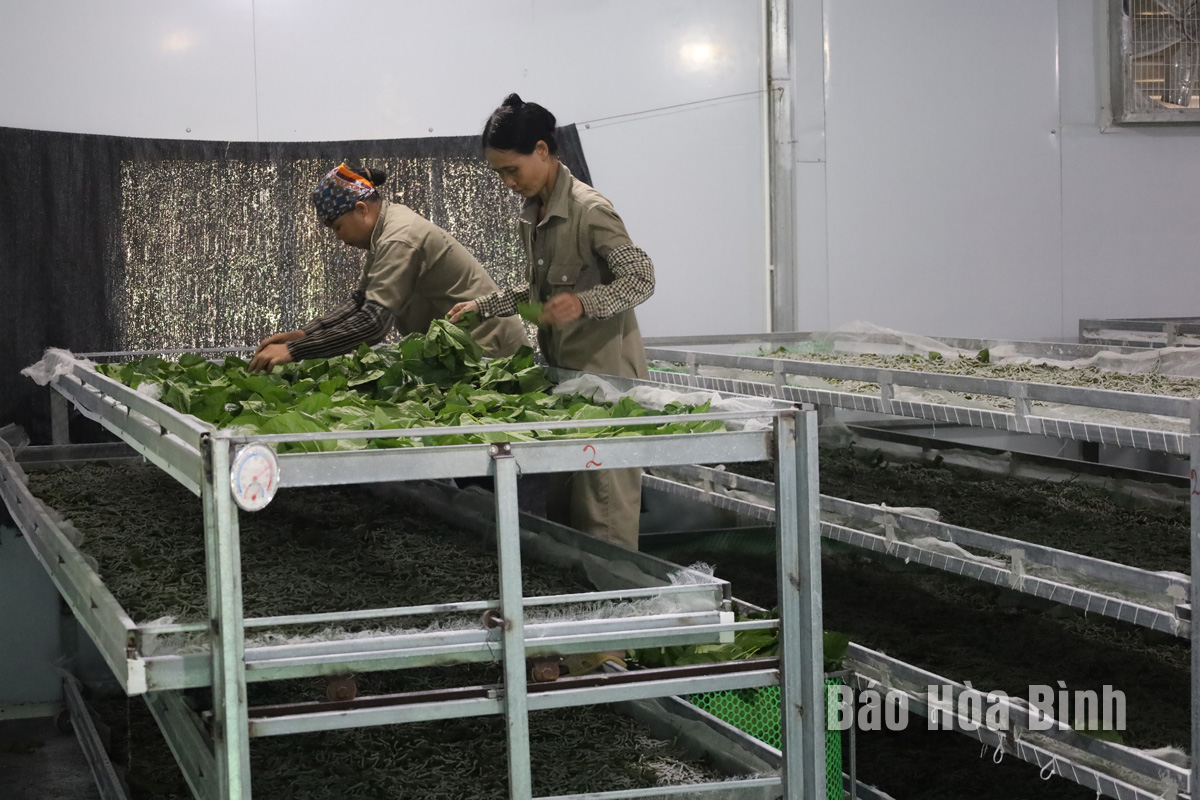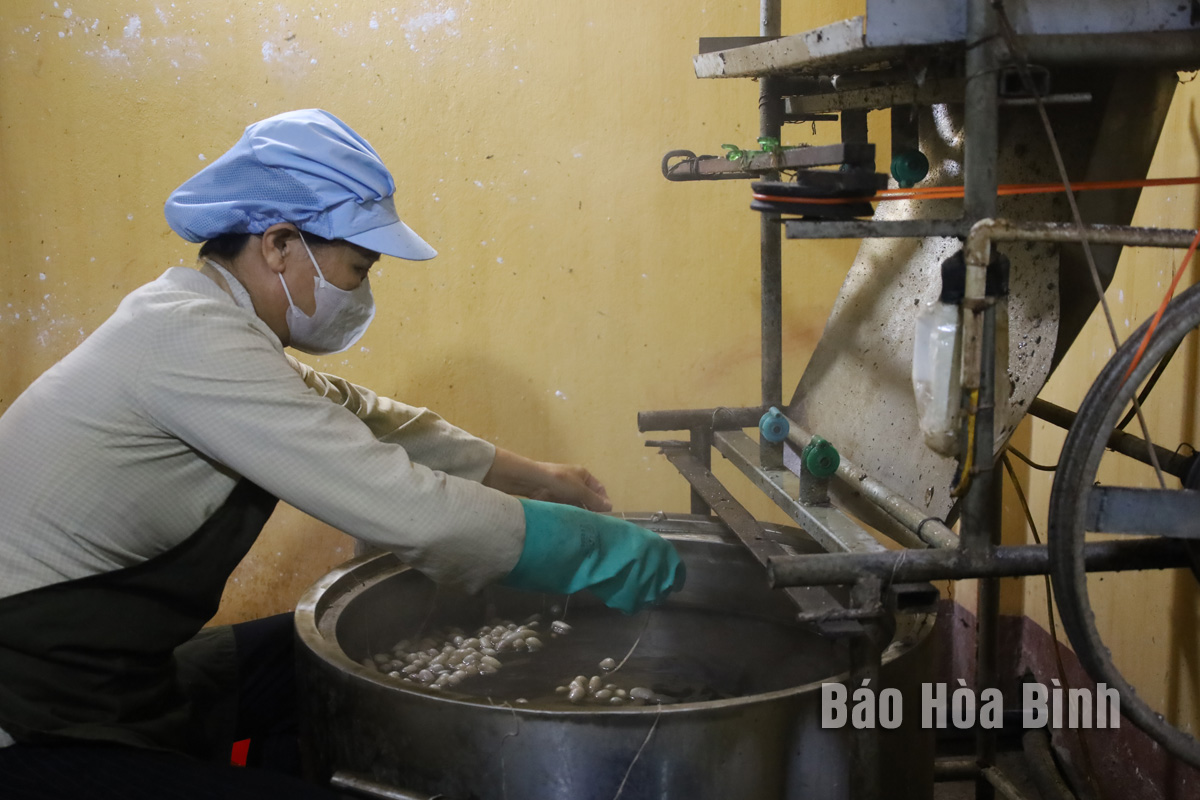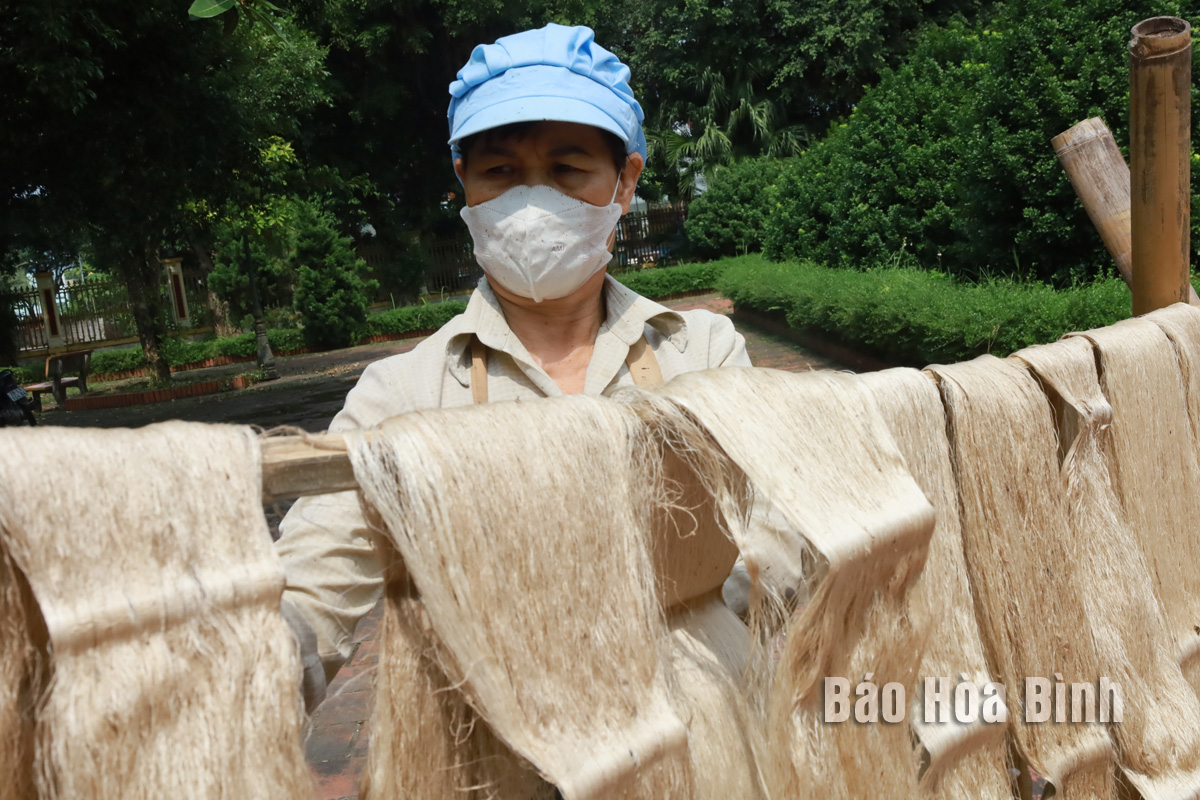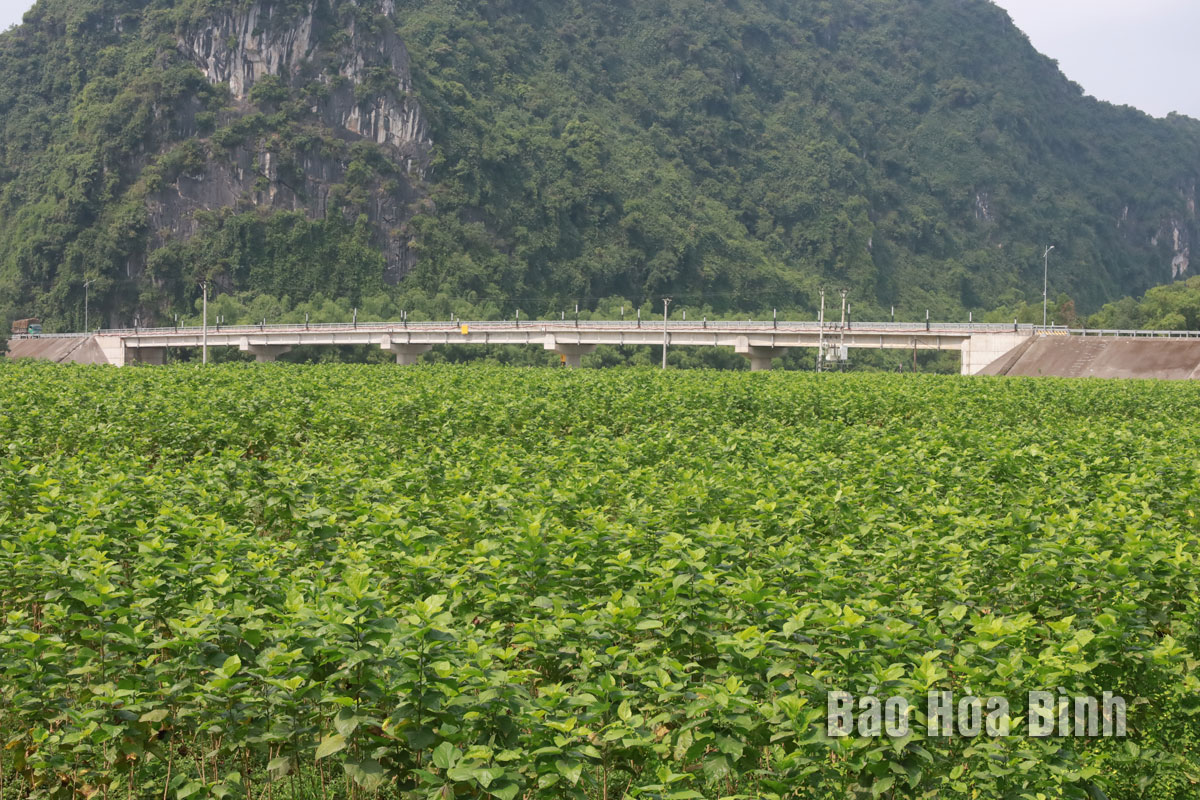
More than 3 years ago, Chi Ne Plantation Industry and Trade Cooperative in Song Boi village, Phu Nghia commune (Lac Thuy) brought mulberry growing and silkworm farming to the locality. The cool climate and the long alluvial land along the Boi River are ideal conditions for growing new crops. With the current mulberry area of about 22 hectares, hundreds of working children in Lac Thuy and Kim Boi districts have been given jobs and improved income. The model is focusing on expanding the raw material areas, aiming to process and weave silk on the spot to serve tourism and export development.
The
communes along the Boi River have been encouraged to intensify and expand the
mulberry growing areas.
The
farmers in Phu Nghia commune have been actively participated in the chain of
mulberry growing - silkworm rearing.
The
local employees have been attracted to participate in the chain of caring for
silkworms.
The
process of bringing silkworms to the wood to spin silk is carried out by the
technical employees of the Cooperative. The experience is required to help
collect larger cocoons and better-quality cocoons.
Chi
Ne Plantation Industry and Trade Cooperative have been applying the sliding
tray technology in silkworm farms to bring the outstanding efficiency, helping
to reduce labor and increase silkworm output on the same unit area.
The
cocoon incubation technique is transferred to the employees by the
Cooperative
During
the process of drying each bundle of silk under the sun, the employees at Chi
Ne Plantation Industry and Trade Cooperative always carefully and meticulously
check the quality of each silk strand.
In the last historic days of April, blending with the joyful atmosphere of the whole country, on the streets of Hoa Binh City, flags, banners and slogans are brilliantly decorated to celebrate the 50th Anniversary of Southern Liberation and National Reunification. Here are the records from Hoa Binh newspaper’s reporters:
Nestled halfway up the mountains in Cao Son commune, Da Bac district, Sung village appears like a picture preserved intact through generations. With a history of over 300 years, the village is home to nearly 100 households of Dao Tien ethnic group – the people who still maintain their distinctive characteristics in housing architecture, clothing, customs and traditional crafts. The village is drawing increasing interest and exploration from both domestic and international tourists, as every visit becomes a cultural journey to experience the authenticity, friendliness, and hospitality of this highland region.
This Spring, more than 1,000 phoenix trees in Thang Hamlet, Thach Yen Commune (Cao Phong) have bloomed brilliantly, quickly spreading on social media. The picturesque beauty of the flower garden has attracted the participation of many people to admire and take photos.
This belief is both a guiding principle and a lifelong ambition for Sa Van Cam, a member of the Tay ethnic group in Da Bac district and a passionate advocate for the Tay culture. The native has devoted years to the revival, preservation, and teaching of the ancient Tay script.
Located just 25 km from Hoa Binh city and approximately 100km from Hanoi, with a journey of around 1 hour 45 minutes, Ngoi Hoa ecotourism site (PriorBay Resort) in Suoi Hoa commune, Tan Lac district, is a stunning peninsula retreat, and a standout destination within the Hoa Binh Reservoir tourism area. Officially opening in February this year, the resort captivates visitors with its distinctive vacation products and a range of exciting adventure experiences.
Over 1,500 women paraded in traditional ao dai (long dress) at Hoa Binh Square on March 5 to mark Ao Dai Week 2025 launched by the Vietnam Women's Union. Organised by the provincial Women’s Union in collaboration with the city’s chapter, the annual event features lively folk dance performances and a colorful parade that celebrated the beauty of Vietnam’s traditional dress and its rich cultural heritage.



